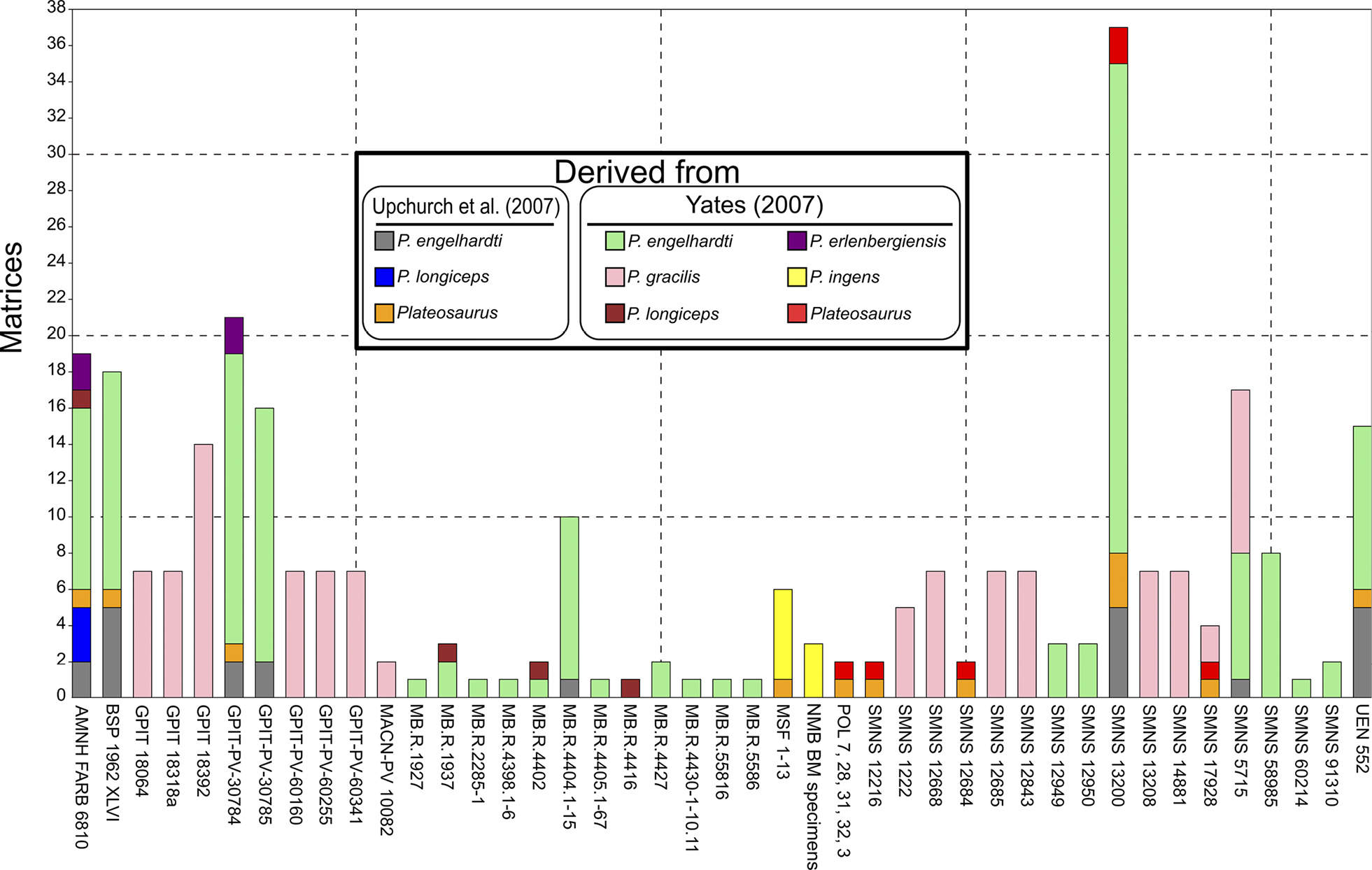
|
||
|
Bar chart summarising the frequency each specimen was used as either P. ‘engelhardti’ alone, as P. gracilis, as P. ingens, as P. longiceps or as ‘P. erlenbergiensis’. Although P. trossingensis (P. ‘engelhardti’ at the time) was considered the only valid species, several species were also used as part of Plateosaurus. Most phylogenetic analyses base their character scores on the same specimens: SMNS 13200, BSP 1962 XLVI and GPIT-PV-30784. P. gracilis is the second species more frequently used in phylogenetic analyses. The skull collected from the younger Stubensandstein, former specimen GPIT 18318a, illustrated in von Huene (1915) and Galton (1985c), left the GPIT collection at some point in 2004, and it is not clear if several works refer to the skull of GPIT I as P. gracilis. The collection recovered the skull in 2022. Specimens GPIT 18064, GPIT 18318a and GPIT 18392 have been used as part of P. gracilis, but they are not given new catalogue numbers because it is not clear if they each correspond to one individual. Specimen GPIT-PV-30787 has not been explicitly used in phylogenetic analyses as part of the OTU for Plateosaurus ‘engelhardti’. |